
Look, normally, I would draw you in with a funny story or quaint anecdote, but today I’m not messing around; we’ll get straight to the point. Should you grow spicebush? Yes, absolutely. You would be hard-pressed to find a shrub with more going for it than this incredible native species.
So, that’s that; you can stop reading, just head to your local garden center or favorite online plant nursery and grab a few. I love when things are nice and simple this way.
Yup, the northern spicebush; great shrub.
You’re still here.
Okay, I can see you need a bit more convincing. No, no, you’re right, pull up a chair, and we’ll do this right.
As already mentioned, the northern spicebush, or in Latin, Lindera benzoin, is native to the United States, specifically the Eastern half. You can find it in the wild as far north as Maine, down to Texas, and just as far west. If you’re outdoorsy, you’ve probably walked by it on hiking trails and didn’t even notice it.
It’s one of those plants where once you know what it looks like, you see it everywhere. (On the Eastern side of the states, anyway.)
Northern spicebush is deciduous, losing its leaves each fall. In the spring, it’s one of the first plants to bud out, erupting in sunny yellow flowers before the light green leaves appear. Spicebush can grow anywhere from 6-15 feet tall, depending on where it’s growing and whether or not you give it free rein or trim it. It’s relatively unfussy and easy to care for, like most native species.
Since we covered the basics, let’s examine some of its finer points.
1. Northern Spicebush is a Quick-Growing Shrub
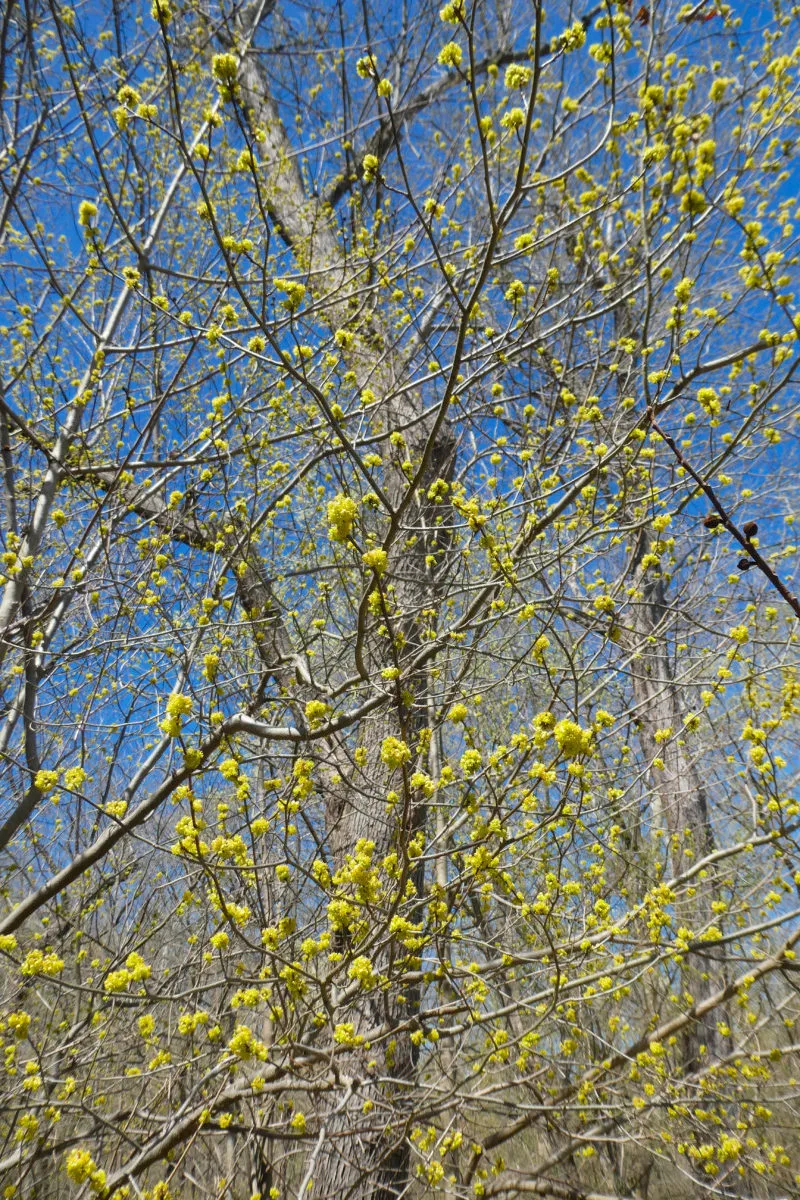
Spicebush is a fantastic candidate if you want to fill in sparse areas in your landscaping. It would even make a decent privacy hedge. In sunny locations, you can expect a growth rate of around one to two feet per year. That’s pretty impressive.
Naturally, shaded areas yield slightly slower growth, but you can still expect around six to eight inches of growth a year.
Once it reaches your preferred height, you can easily keep it in check with a hard trim each year.
2. Excellent Species for Pollinators and Birds
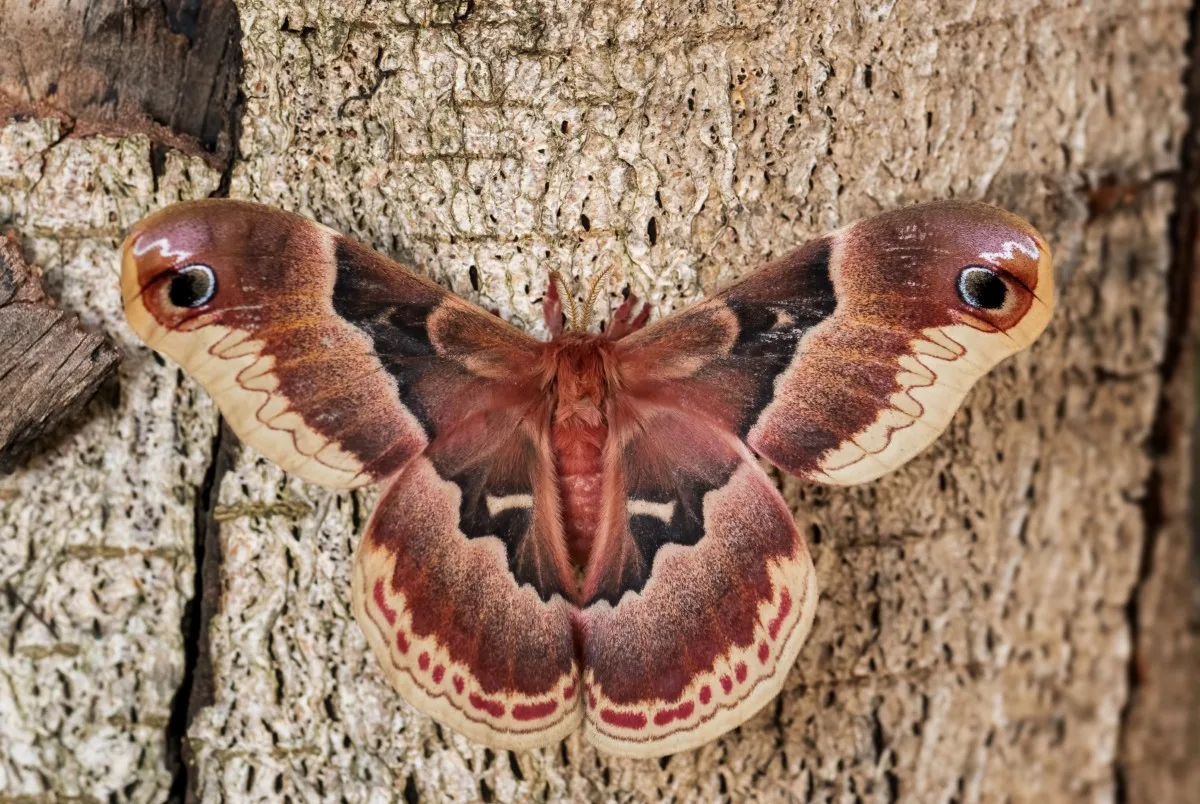
Many of us have answered the call to create pollinator-friendly spaces at home; if you’re one of those folks, I can’t recommend northern spicebush enough. Because it flowers much earlier than other plants, it’s often one of the first or only available food sources for early emerging native bees and pollinating flies.
Related Reading: You Don’t Need to Save the Dandelions for The Bees (These Plants Are Much Better)
Later in the season, several native butterfly and moth species prefer the leaves for food before turning into the beautiful Eastern Tiger Swallowtail, the Promethea Silkmoth, or the aptly named Spicebush Swallowtail.
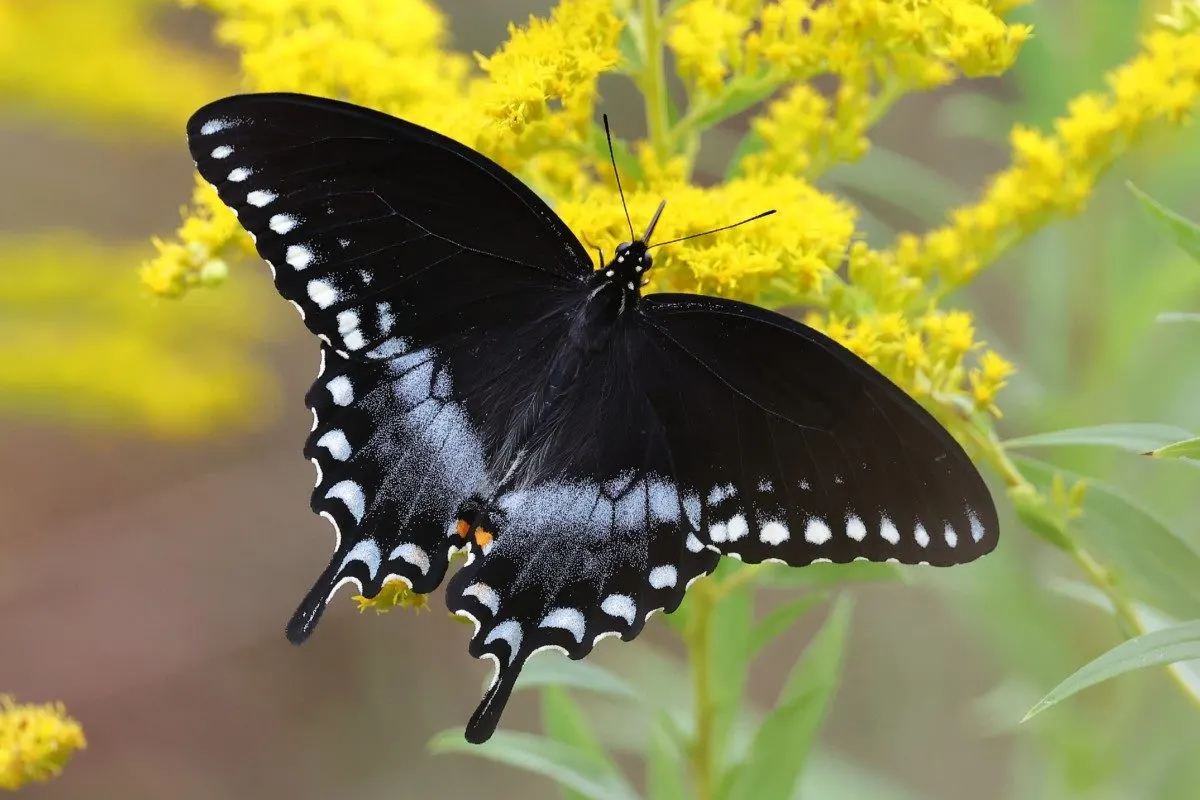
The bright red berries are also a favorite of songbirds. If you’re looking to attract more feathered friends to your yard, planting a spicebush is a great way to attract them.
3. Great Choice for Shady Areas
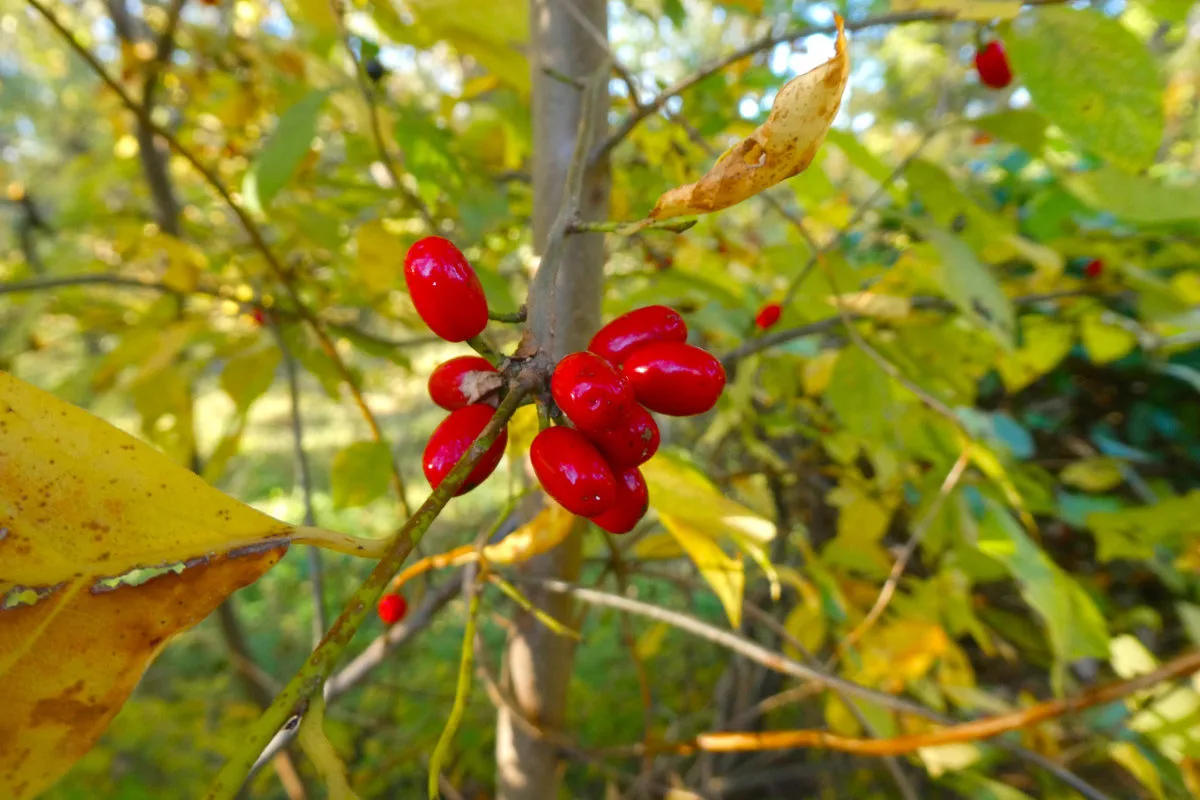
Anyone with a shady yard can tell you that finding something attractive to grow there can be a real headache. It seems the more popular plants are always sun-loving. And if you have a shady area with damp soil, forget about it.
Luckily, this is the exact environment spicebush thrives in when growing in the wild.
While it will go bonkers in full sun, this unfussy plant does quite well in both partial and full shade. You would have a harder time finding a place it won’t grow.
4. Northern Spicebush is a Native Species
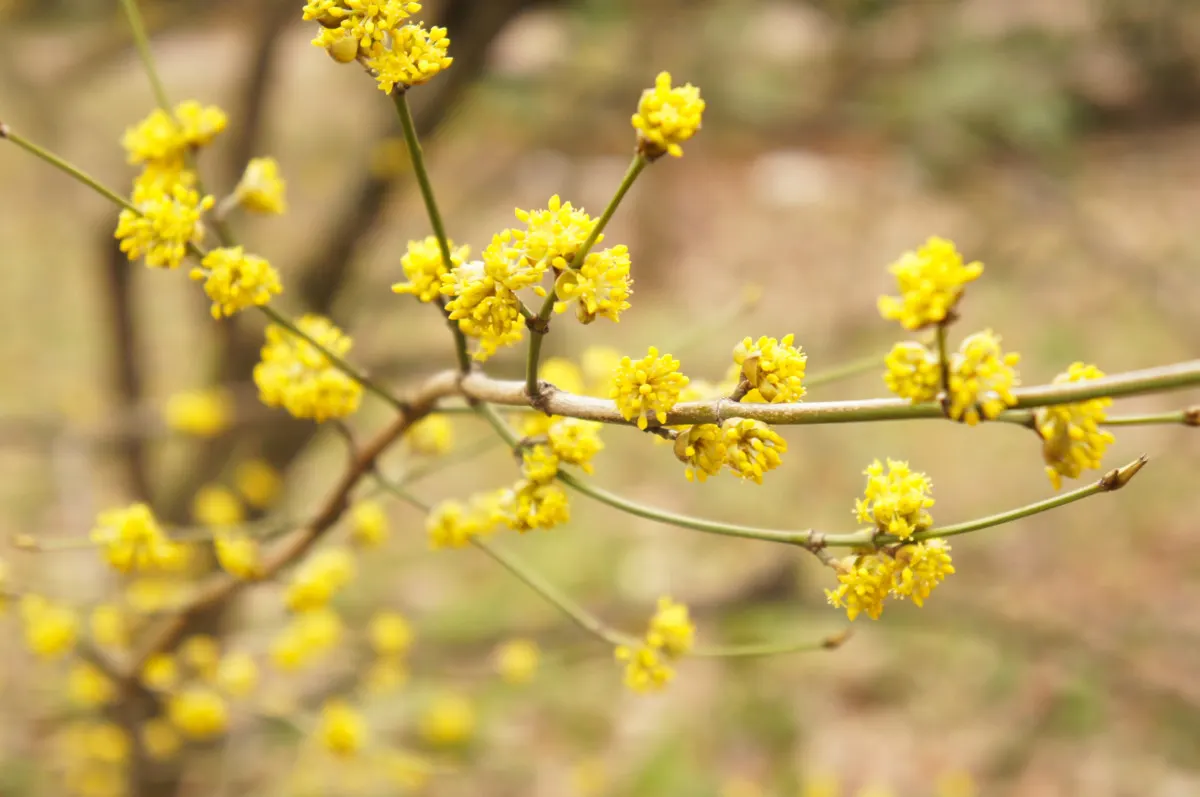
Invasive non-native species have become a real problem across the states. These plants usually started as popular ornamentals. Because they have few native pests or diseases to impede them, they have spread into the wild over time, where their unchecked growth has disrupted many natural habitats.
More gardeners opt for native species when choosing plants for their gardens, hedges and backyards. Northern spicebush grows natively in almost half of the US, making it the perfect option for those looking to include more native plants in their gardenscape.
5. Grows Well in Less-Than-Ideal Soil
While it prefers moist, loamy soil, spicebush isn’t picky and will do just fine in nearly all soil types. In the wild, it’s a scrapper, making it a great addition to your yard if you have less-than-ideal soil.
It’s especially suited for areas of your property where the ground is too moist and damp for other plants to grow. If you’re planning a rain garden, and you should, be sure to include a northern spicebush.
6. Nearly All of the Shrub is Edible
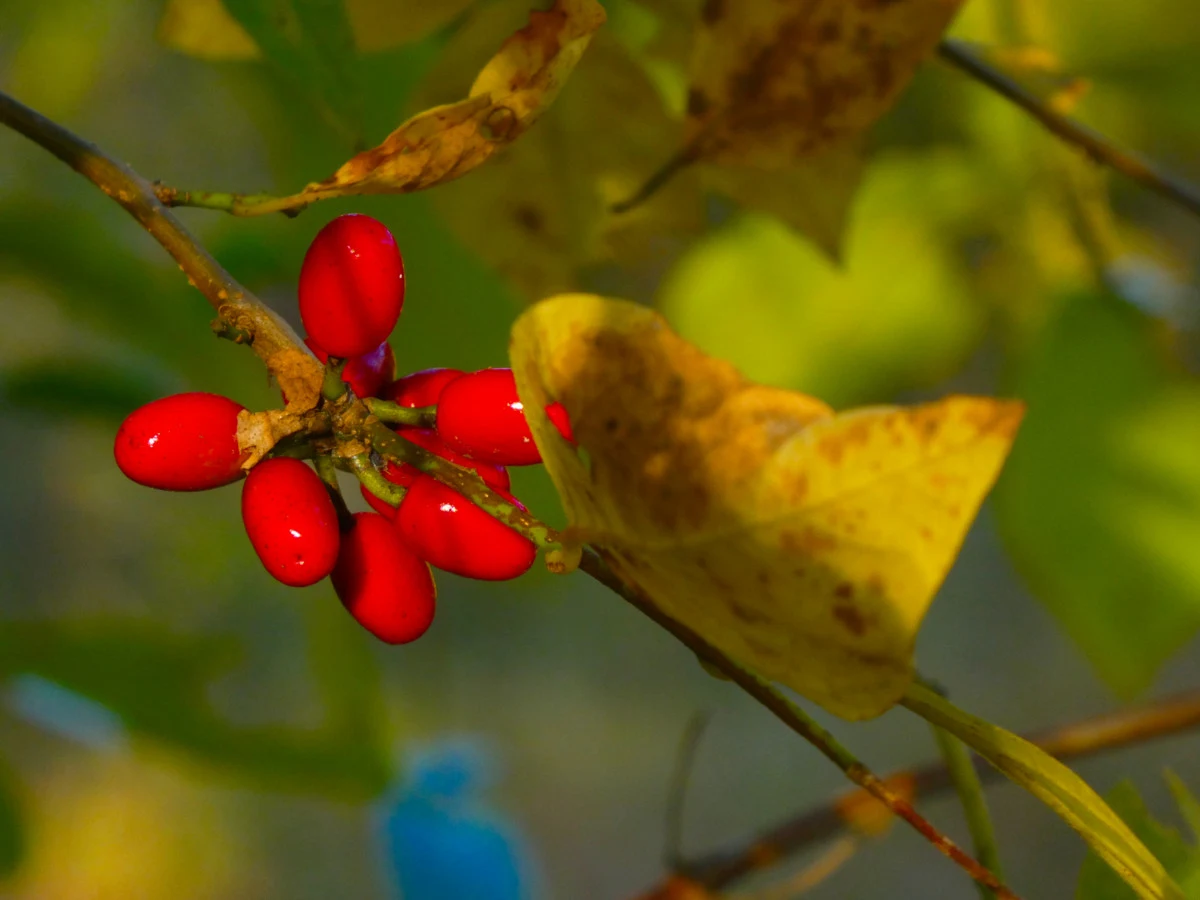
This species was an important plant for many indigenous peoples in the states who used every part of the shrub growing above ground. It was used both medicinally and to flavor food. Because of this, it’s a favorite among foragers.
The ripe berries are a culinary curiosity, having a warm allspice flavor to them. If you’re keen on using the berries, be sure to plant several shrubs, as each plant will produce either male or female flowers, not both. You’ll need several to ensure you get both male and female flowers for successful pollination of the female flowers, which are the berry producers.
I could fill another article with everything you can make with spicebush, but here are a few simple uses for spicebush in the kitchen.
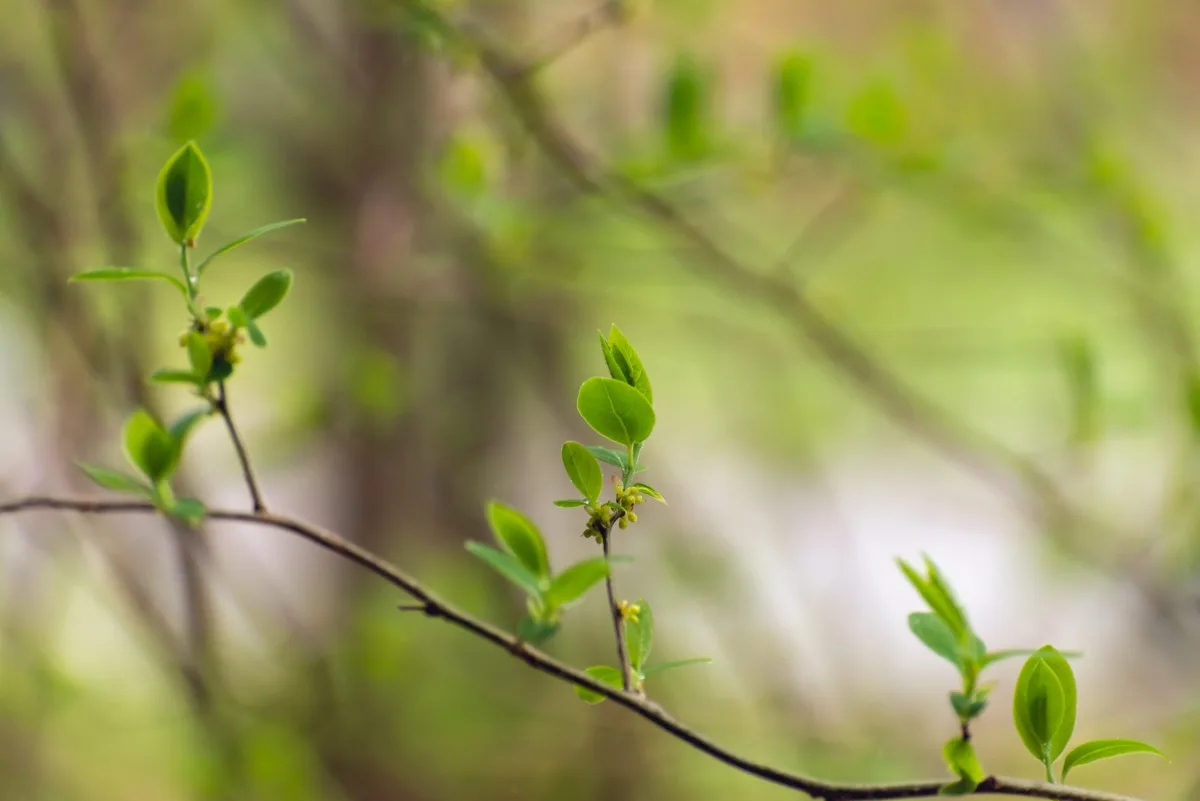
- Make a bracing herbal tea with the twigs and leaves
- Young leaf buds make an excellent addition to stir-fries in the spring
- Use the flowers, leaves and berries to infuse vinegar, honey or mead
- The green, unripe berries have a fantastic bite to them, almost citrus and peppery
- As the berries ripen into a deep red, they take on a warmer flavor more akin to allspice
- You can eat the berries fresh or dried and grind them to use as a seasoning
- The leaves also have a wonderful scent and flavor, making them the perfect addition to a simmer pot or mulled wine
7. It’s a Low Maintenance Plant
The northern spicebush has almost no issues with disease and rarely has pest issues making it an ideal set-it-and-forget-it plant. You don’t have to mess around with complicated fertilizing routines or worry about hungry insects defoliating it. How many other flowering berry-producing shrubs can you say that about?
8. Three-Season Color
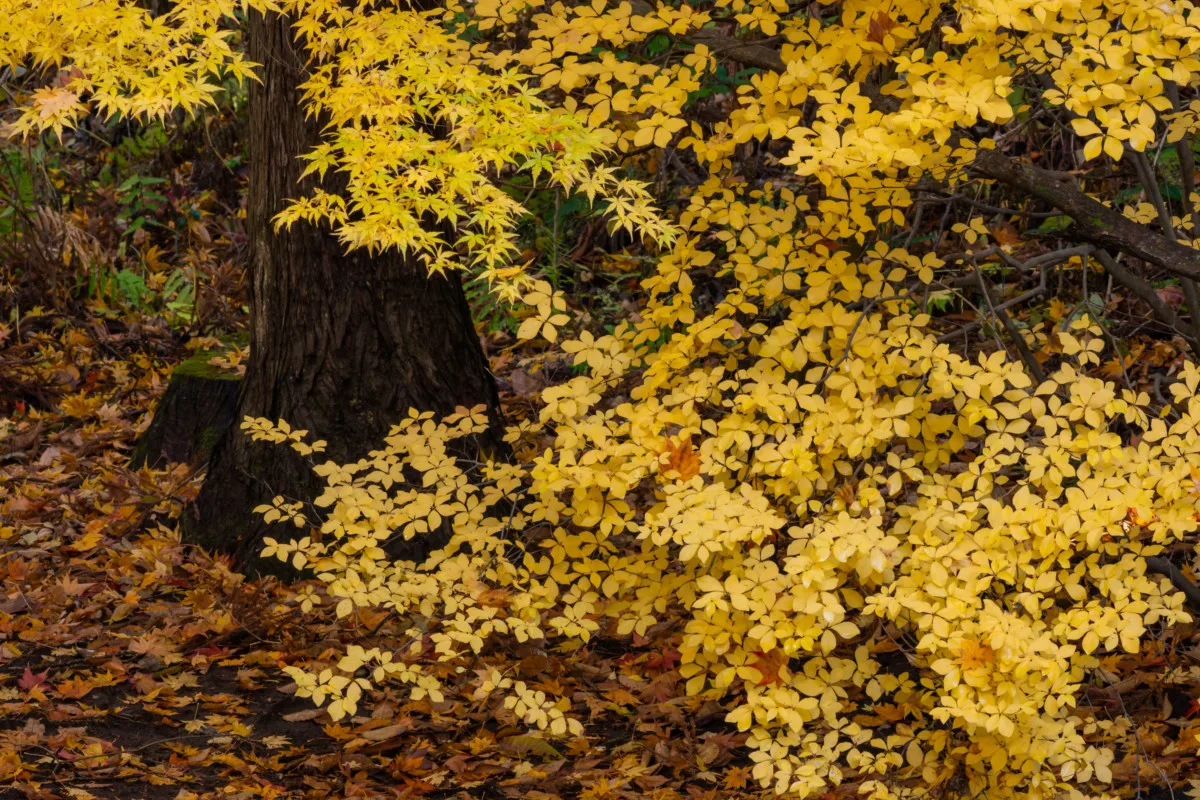
Spicebush is a great choice if you want color that doesn’t stop. It’s also known as forsythia of the wild because of its early bloom time and bright yellow flowers. It’s bound to be the first ornamental to bloom in your backyard, with beautiful blossoms to cheer you in late winter.
The leaves, which follow shortly after the blooms, are a lovely fresh green throughout the warmer months until the fall, when they turn a warm gold.
And don’t forget the berries. The young berries are a vivid, shiny green that slowly develops into a lovely Christmas red in the fall.
Not only is it a beautiful shrub, but the flowers, leaves and twigs all give off a wonderful, warm spicy scent when brushed or broken.
See? I told you.
With so many admirable qualities, spicebush is definitely in the running for the best all-around shrub. It’s certainly got my vote.
And if growing spicebush isn’t on the cards for you, I highly suggest seeking out a local supply to forage. The best time to look for it is late winter or early spring when the tell-tale flowers make it easy to find in a sea of otherwise brown undergrowth.
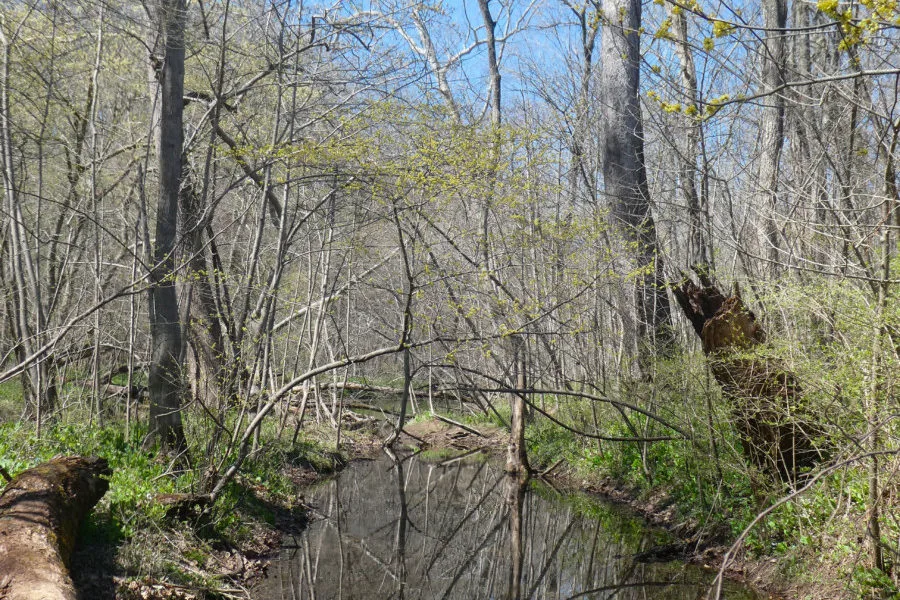
Search near swampy areas or the banks of streams. As always, please forage responsibly, mindful of where you are foraging and how much you take.

Get the famous Rural Sprout newsletter delivered to your inbox.
Including Sunday musings from our editor, Tracey, as well as “What’s Up Wednesday” our roundup of what’s in season and new article updates and alerts.

